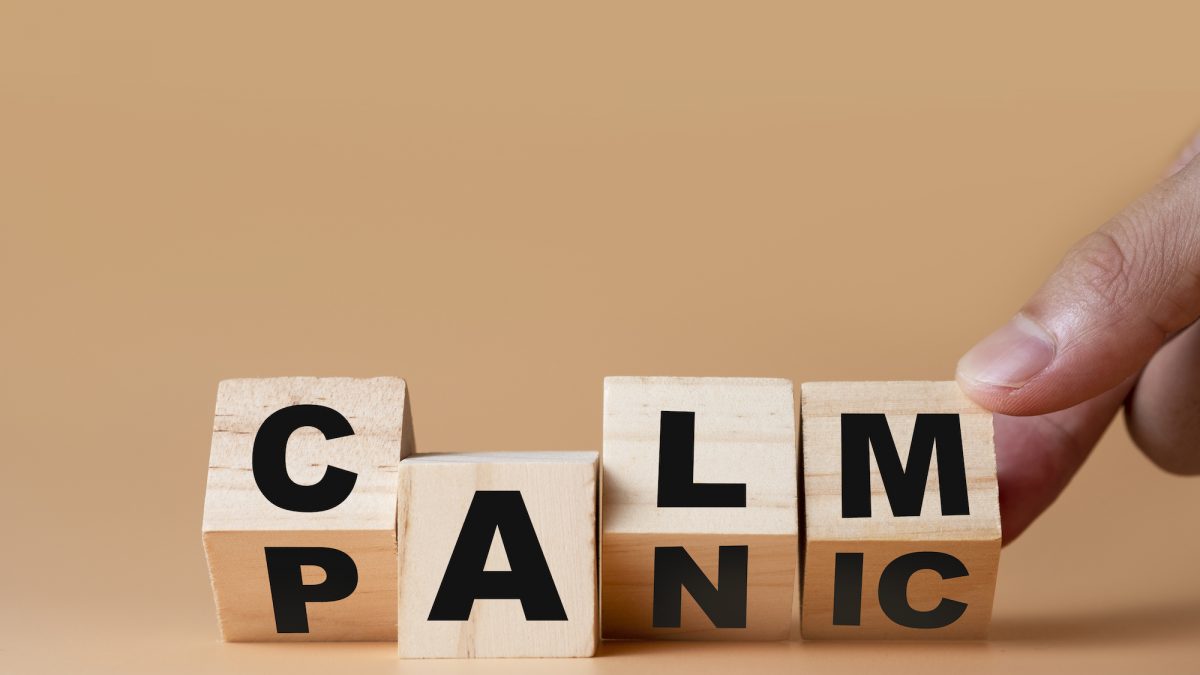A Framework
Calming Anxiety
{10 minutes}
Calming Anxiety
Finding the Ground
Do you see how the letter 'A' in the image to the left is resting squarely on the ground. When you notice anxiety arising within you, which may be a perfectly appropriate response to something that is happening in your inner or outer world, we want to invite you to remember the letter A here. Anxiety, in order to operate, requires that we not be fully in contact with the ground. If we are in contact with the ground, we won't be experiencing anxiety usually, we'll be running away. Does that make sense to you?
Anxiety is the primal, body-based expression of the flight response. We might want to get away from something that is outside of us, or we might want to get away from something that is inside of us, but it's essence is this yearning to get away. As soon as we really feel this, we can work with this energy. We can begin to ask ourselves- What is happening with me? What is it that I'm trying to get away from?
There are many possible answers to this question. I might be having an emotion that I don't know how to be present with, and that I'm afraid. Grief, for example, is very frightening to many people. Anger, also, is very frightening to many people. Or, I might be having a response to something that is outside of me. An external threat cue. This could be something environmental, like the smell of smoke. Or it could be something social in nature, like interacting with someone who is taking up too much space–physically, energetically, or emotionally.
We often know we are anxious when we are standing still and our heart-rate elevates. Why does that happen? Heart-rate is mediated by several physiological systems, including the sympathetic, or fight or flight system. When there is a cue of threat (internal or external) beneath the threshold of conscious awareness, and the body turns on the sympathetic defensive response, it raises the level of arousal in the body, and the heart-rate speeds up as the vagal brake withdraws.
As we begin to de-mystify this process, we can track it with more awareness, and begin to realize that is an invitation to response. Sometimes, it is arising in relation to something I can't do anything about, but often I can do something. I might have to say something to someone that is outside of my comfort zone, or I might need to assert the sovereignty of my space, or I might need in some other way to establish a boundary (scary, and differentially scarier for those with less positional authority, or less centered social locations (e.g., in the US, non-white, non-male, non-hetero-sexual, non-Christian, non-affluent, etc.). And yet, none the less, I may need to do this. Or, at another level, I may need to allow my body to mobilize. These energies of the fight/flight/and shutdown response are just that: energies. Sometimes they need to run their course. Sometimes that means I need to get up and go running. That can be a direct way of metabolizing that energy. Sometimes I need to physically set a boundary. Anxiety, specifically, charges the legs, because the flight response is about getting away, and we generally do that by running.
Anxiety turns into panic when we lose contact with regulation of our breath. When we feel the sympathetic system kicking on, and we notice this, we can consciously keep our breath connected to the ground. This is kind of a super-power (don't tell anyone.). As the body begins to mobilize, if you keep your breath connected all the way to the ground, force will begin to build in your body. This is harnessing the energy in survival responses, which can allow us to do remarkable things.
NOTE: Because mindfulness is being prescribed these days, as a cure-all, we'll simply point out here that if we are in a highly sympathetic state (high anxiety state) practicing traditional mindfulness is contra-indicated, because it puts us into conflict with the innate drives of our deeper biology. If you want to understand this better, watch the film called Polyvagal Theory, and review the practice called Polyvagal Maps.
Related Practices:
From the standpoint of working with survival-level defensive responses, this is related to Coming out of Flight, Coming out of Fight, and Coming out of Freeze. Training our bodies to be able to tolerate sympathetic activation, see Elite Performance, and Smile When You Exercise. Setting clear boundaries, see Feng Shui and Qi Gong. See the film Turning on the Connection System to better understand the physiology of stress, and the film Polyvagal Theory to better understand neural platforms of behavior. If you'd like a brief introduction to the theory, visit our Brief Illustrated Guide to Polyvagal Theory. For a comprehensive exploration of the theory with its developer, see The Future of Medicine and Mental Health, with Dr. Stephen Porges, PhD. See Clinical Applications of Polyvagal Theory. See Autonomic Mapping. With regard to healing traumas and down-shifting other distress states, see Healing Trauma.Photography: Licensed from Pexels.com, used with permission.


